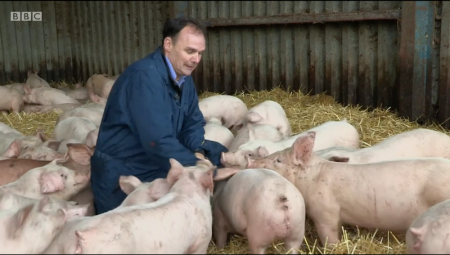New antibiotic targets announced for the pig industry
27th Oct 2017 / By Alistair Driver
New antibiotic targets have been announced for the pig sector, which figures published today show has already made significant cuts in usage since 2015.
The targets, announced at a conference staged by the Responsible Use of Medicines in Agriculture (RUMA) alliance in London, will require the pig sector to cut antibiotic usage by 62%, to 99mg/PCU (Population Corrected Unit), between 2015 and 2020. The stepped targets include a 25% reduction for 2017.
More details can be viewed in the full report by the Targets Task Force here
The NPA has issued a press release in response to the new targets and 2016 usage figures, which can be viewed here
The targets for further reductions demonstrate the pig industry’s drive to continue the excellent progress made already, the NPA said.
Data collected by the pig industry through the eMB-Pigs database, also published today, highlight the significant steps pig producers and vets have already taken in reducing and refining their antibiotic use.
It shows overall use in pigs fell by 34% between 2015 and 2016, while use of the critically important antibiotics (CIAs) dropped by a hugely impressive 73% and make up a tiny proportion of overall use.
These positive trends were echoed in another set of data published today, the Government’s Veterinary Antibiotic Resistance and Sales Surveillance Report (UK-VARSS 2016). It showed overall UK livestock industry antibiotic sales fell by 21% to 45mg/PCU in 2016, exceeding the 2018 target of 50mg/PCU.
Challenging but achievable
 NPA chairman Richard Lister described the targets as ‘challenging but achievable’.
NPA chairman Richard Lister described the targets as ‘challenging but achievable’.
Richard, who has, himself, made great strides in reducing antibiotic treatments on his pig farms in Yorkshire and Nottinghamshire, played a major role in setting the new targets as a member of RUMA’s Targets Task Force, along with Mark White, president of the Pig Veterinary Society. This followed consultation among NPA and PVS members.
Richard said: “The figures published today show the really good progress made right across the industry in reducing and refining antibiotic use. We know that reductions will be challenging for individual farms when faced with specific disease issues – and antibiotics will continue to serve as an important tool to protect pig health. But, as an industry-wide target, it is achievable.
“Many producers across the industry, working with their vets and others, are already taking action and having ‘the courage to cut’. But there is more that can be done and, for those who haven’t yet risen to the challenge, advice and support is readily available. Every producer and vet has a part to play in helping achieve the 2020 target. Doing nothing is no longer an option.”
Superb efforts
NPA chief executive Zoe Davies said: “We welcome these targets and totally accept the justification for them, as laid out in the O’Neill report.”
She praised the ‘superb efforts’ of those who were already making changes and said the association would continue to show leadership in bringing about change within the sector.
“It is true that, historically, the pig industry has been a relatively high user. There are many reasons for that, including the specific disease challenges the UK industry faces and a long period of poor prices for pork which prevented much needed reinvestment on farms,” Dr Davies said.
“These targets might only take us until 2020, but rest assured the industry will not stop there. However, we must also continue to ensure that the health and welfare of our pigs is the priority at all times. We need to cut responsibly.”
NPA senior policy advisor Georgina Crayford, who put together the association’s widely praised Antibiotic Stewardship Programme last year, said the publication of the eMB figures is ‘really impressive’ on its own. “Very few other countries publish national on-farm antibiotic usage for the pig sector, so this is a real step up in transparency,” she said.
Dr Crayford also highlighted the success in reducing the use of the classes of antibiotics that are most important for human medicine. “Overall, CIAs represented just 0.1% of total antibiotic use, with reductions recorded last year across all classes. Colistin is now barely used at all in UK pigs.”
She stressed that, while producers are up for the challenge, a partnership approach would be required. “If we are going to meet these targets, support will be needed from Government for investment in infrastructure and pig health improvement programmes and we will also need a proportionate and responsible approach from the supply chain.”